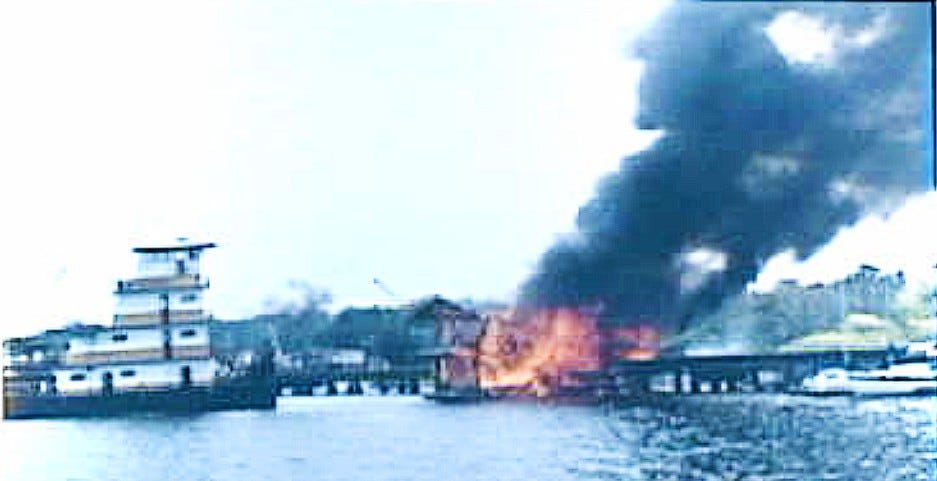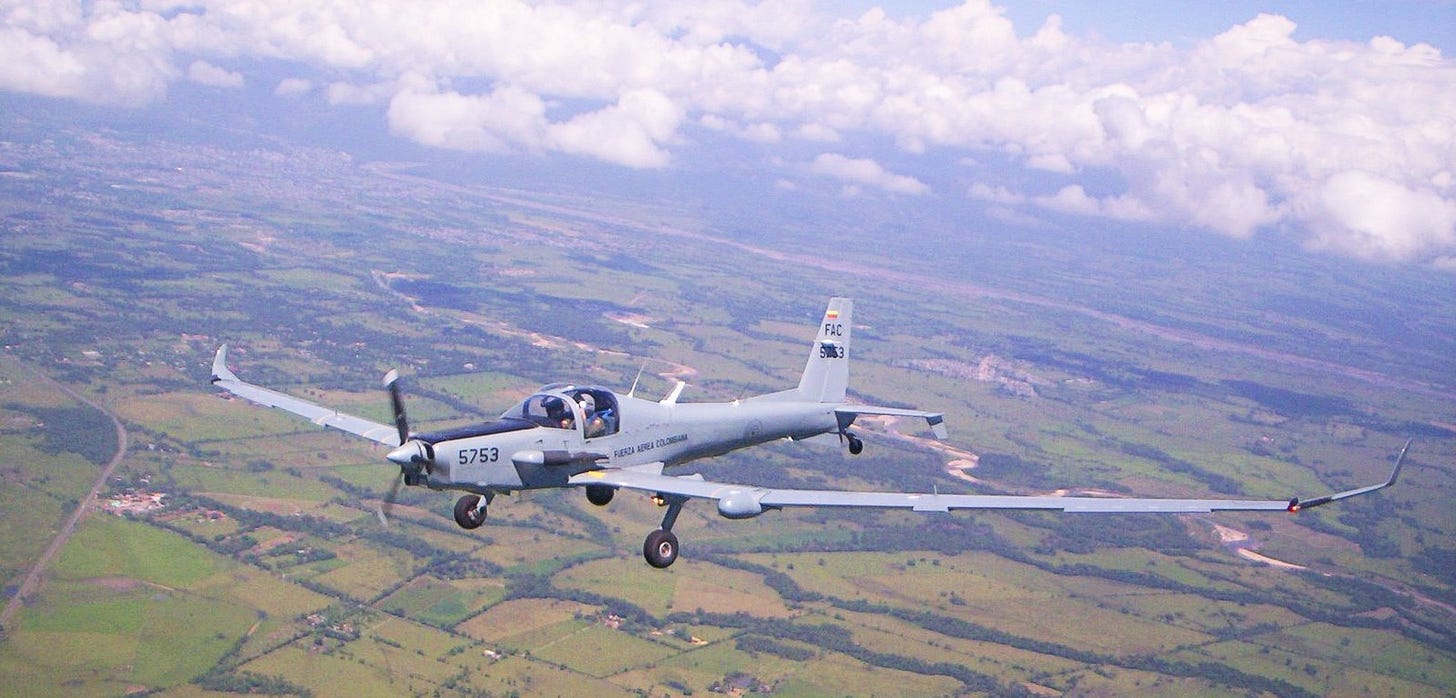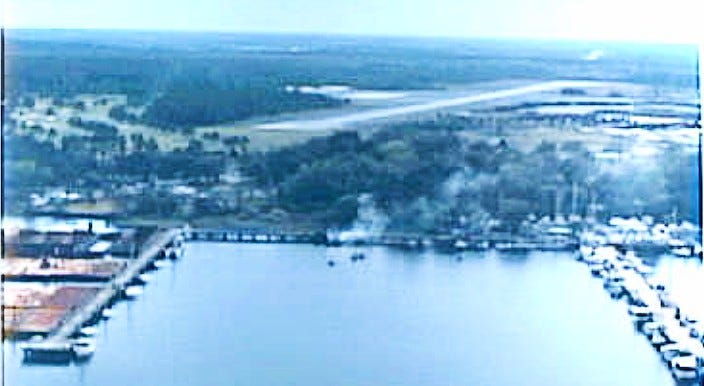25 Years Ago, a Spy Plane Nosedived Into a Florida Houseboat
Both Air Crew Died in a Fiery Crash on the St. Johns River

Bad things can happen at marinas. A seacock fails, the boat floods and sinks. A nasty electrical fire ends in a vessel’s total loss. These kinds of things happen regularly. This isn’t that kind of story. This is about a docked boat that was struck by a plane—and not just any plane, not just any pilots.
Twenty-five years ago a CIA spy plane crashed shortly after take off, nosediving into a houseboat docked at Green Cove Springs Marina on the St. Johns River in Florida. Both pilots were killed, and the boat was destroyed by fire, although it’s owner was lucky to not be on board.
The plane—an exotic motorized glider called a Schweizer 2-37A—had just taken off from Reynolds Air Park, whose main runway terminates just 2,200 feet from the marina. The only tenant at the private airport is a company called Pegasus Technologies, which is a subsidiary of the U.S. Central Intelligence Agency or at the very least controlled by it.

Both Pegasus and the marina are businesses operating at Reynolds Industrial Center, a sprawling facility on the grounds of a World War II-era Navy base.
(At this point, a disclaimer is in order. The existence of Pegasus and its location are surely known to any adversary nation with a competent intelligence service. It is also an open secret among residents of Green Cove Springs, certainly anyone who has lived there very long. Moreover, Pegasus was named in a 2005 New York Times article about covert operations during the Afghan War.)1
As a regular reminder, a pair of Russian helicopters—probably Mi-17s—are often seen flying over the city’s waterfront in what are likely training and sensor-testing missions.2

The fatal crash happened at 1:47 p.m. on Feb. 19,1998, as described in this excerpt from a report by the National Transportation Safety Board:
According to several witnesses, the airplane was observed in climb attitude about 200 to 300 feet above the ground. The takeoff and climp up to that point appeared normal. Witnesses said they then heard the engine noise decrease, as if powered back. Witnesses stated the airplane’s nose was lowered slightly, and the airplane began a left turn toward the Airpark. They stated the airplane’s bank angle increased to between 60-70 degrees and nose dropped as if the airplane had stalled. The airplane then struck a docked, unoccupied houseboat and exploded into flames.
The dead air crew were Glenn Burns and Michael Goffena. Toxicology reports were negative for drugs and alcohol, although a abnormal amount of cyanide was found in Burns’ blood, well below a fatal level. (Elevated cyanide levels are often found in the blood of smoke inhalation victims.)
The NTSB blamed the crash on pilot error after “loss of engine power for undetermined reasons.” Attempting a return to the runway, the pilots apparently banked the plane too sharply for its slow speed, causing it to stall and descend into the houseboat like a kamikaze. One witness described the impact as “a huge ball of fire.”
The owner of the houseboat—last name: Peters—arrived at the scene shortly after the crash. He told the police that no one had been on the boat for two weeks.
Accident notwithstanding, Pegasus surely has some of the nation’s most skilled ex-military pilots, as evidenced by its long-time employment of John Ford, a legendary Air America veteran. Air America, the subject of a 1990 Mel Gibson movie of the same name, flew secret CIA missions in Laos during the Vietnam War. After it was disbanded in 1976, the CIA replaced it with a handful of new outfits such as Pegasus that came to comprise a new secret air force.
Pegasus flew missions in Afghanistan and Columbia (which perhaps not-so-coincidentally also operates its own Schweizer motor-glider). Pegasus flew a Schweizer out of Green Cove until at least the mid-2000s. Wikipedia says only 12 of these planes were ever made.3
Ford was a boss at Pegasus and, remarkably, continued to fly foreign missions into his 70s. During off-duty hours, he could often be found messing around on his Cheoy Lee Offshore 31 ketch, which he kept at Reynolds Park Yacht Center, about a mile from Pegasus headquarters. Ford died in July 2009 from pancreatic cancer. He was 75.
I remember sitting in my cockpit one night, watching two of these helicopters do a kind of dance around an unocuppied ship docked on an adjacent pier. The helicopters would swoop down and rotate in unison around the vessel, then fly off before coming back and doing it again—over and over. I theorized they were testing some kind of cat scan-type sensor for examining ships.
My former boss and I got to see one of these aircraft up close in the mid-2000s, when its pilots made an unauthorized landing at Gainesville Airport. My boss was a Gainesville boatbuilder who had also built experimental aircraft, so when we saw the Schweizer about to land, we sped over to the airport, which was pretty open at the time. Apparently, the pilots had landed at Gainesville to show off the plane to parents, which I later learned was a security breach. They were distinctly nervous when we walked up to take a look.




